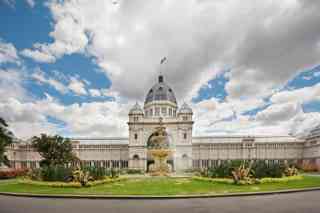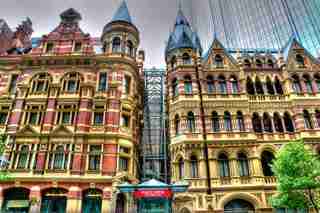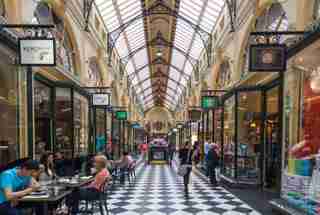7 Examples to Prove Melbourne Has Stunning Victorian Architecture
Queen Victoria ruled the British Empire from 1837 until her death in 1901. During this long reign, architecture on British soil was dominated by many different styles. Some were evocative of the past—Gothic, Elizabethan, Jacobean, Scottish Baronial, Italianate, and Greek, to name a few. Still others reacted to a rapidly industrializing world: Arts and Crafts and later Art Nouveau. With the advent of steel and sheet glass, it was clear that industrialization would make its mark on architecture. Australia, a British colony, experienced a major gold rush during the mid-1800s, and Melbourne's population boomed. The newly prominent metropolis decked itself out in fine Victorian architecture, much of which survives to this day. Below are seven of Melbourne’s best Victorian buildings.

Royal Exhibition Building (1880)
Designed by the British-born architect Joseph Reed, Melbourne’s Royal Exhibition Building was completed in 1880 for the city’s first international fair. The reign of Queen Victoria overlapped with the Industrial Revolution. During this time innovations and curiosities were typically put on display in grand exhibitions. Moreover, Melbourne had quite a bit of wealth to flaunt after a gold rush in the mid-1800s.

The Rialto (1889)
Located on the picturesque Victorian Collins Street, the Rialto was completed in 1891. The colorful Venetian Gothic palazzo building is a festive sight from Melbourne’s boom days. Its architect, William Pitt, was one of the city’s top talents in the late 1800s.

Block Arcade (1893)
The Block Arcade is one of Melbourne’s top shopping destinations. Completed in 1892, it was inspired by Milan’s Galleria Vittorio Emanuele.
Parliament House (1855)
Designed by Charles Pasley and Peter Kerr, the state Parliament of Victoria has occupied this building since its construction in 1855.
General Post Office (1867)
Created by A. E. Johnson and William Wardell, the Renaissance Revival design of Melbourne’s General Post Office was typical of the architecturally nostalgic Victorian era.
Princess Theatre (1886)
The French Second Empire style was also wildly popular during Queen Victoria’s reign, particularly on the European continent. Here it is on display in the Princess Theatre, which was built in 1886 by William Pitt.
Hotel Windsor (1883)
Less ornate than some neighboring buildings, the Charles Webb–designed Hotel Windsor exemplifies the ideals of Italianate architecture, which was typical of the late Victorian era.